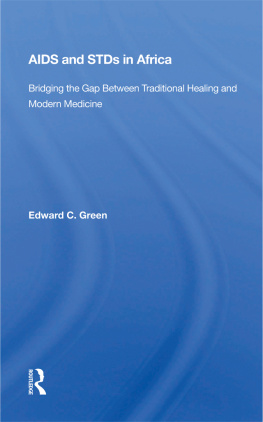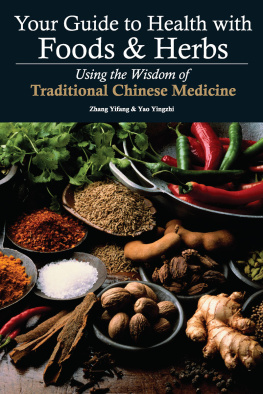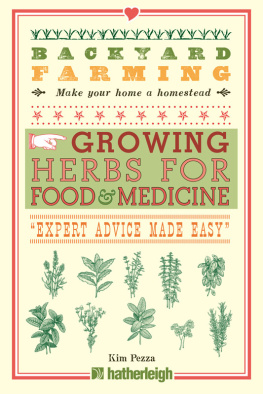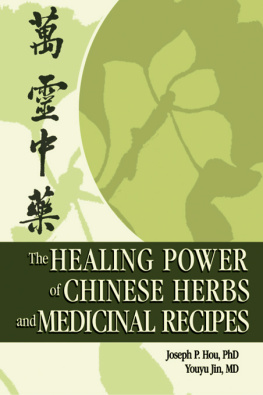Traditional Medicine and Herbs of Africa
Dagmar Daniel, Alem Tesfaye, Rene Daniel, Abohawariat Tesfaye
Copyright 2020 Dagmar Daniel
All rights reserved.
ISBN: 9798693050693
DEDICATION
To all the known and unknown healers, who cured patients using the amazing herbs of the planet, and to everybody who brought us the knowledge of the amazing properties of these herbs from all corners of Earth.
Front cover photos:
Mount Kilimanjaro: This Wikipedia and Wikimedia Commons image is from the user Chris 73 and is freely available at //commons.wikimedia.org/wiki/File:Kibo_Mt._Kilimanjaro_3.JPG under the creative commons cc-by-sa 3.0 license.
Flower buds of Eucalyptus globulus: https://commons.wikimedia.org/wiki/File:Eucalyptus_globulus_globulus_buds.jpg . Source: https://biocache.ala.org.au/occurrences/4daf4bd8-5c6c-42db-b54c-4a7277e5c13f . This file is licensed under the Creative Commons Attribution 3.0 Australia license.
Back cover photo:
African baobab tree. Author Vaughan Leiberum. https://commons.wikimedia.org/wiki/File:African_Baobab_Tree_(2896937432).jpg. This file is licensed under the Creative Commons Attribution 2.0 Generic License.
CONTENTS
ACKNOWLEDGMENTS
We would like to acknowledge the expertise and professionalism of our Fiverr team, which helped us with producing the cover and with formatting of the book.
SAWUBONA MEANS I SEE YOU
eThekwini in Zulu or Durban in English is the third largest town in South Africa. When people think of South Africa, they usually imagine, wild, beautiful, untamed nature ( Figure 1 ). However, Durban is a modern town. It hugs the east coast of the South Africa, looking toward the Indian Ocean. The weather is what you would expect - humid and subtropical, with snow and frost being an unknown phenomenon.
Figure 1. Rhinoceros in South Africa (1).
Almost 4 million people call Durban home this is about half of the population of the New York city and more than Chicago. The population is highly diverse: half of the Durban population is Caucasian; the other half belongs to the numerous African tribes, Zulus being the largest. If you were visiting from Europe of the North America, you could easily confuse Durban with one of the cities in your home country. There are highways, high rises and traffic, business district and universities ( Figures 2 and 3 ). The cars are mainly European, although if you were to visit Durban after World War II, you would find American Packards (gone with the wind), and Chryslers (still here).
In short, you would not think you are out of place -and if you were sick, you would expect to find a modern pharmacy and get some meds to treat you. If you felt really poorly, you may even go and look for a doctor. You would find one, too. However, if you look long enough, you would find something else, which would make sure you know you are not in Europe or the North America anymore, not even in Kansas.
Figure 2. Durban Central Business District (2).
Taking a turn, you will find yourself in a large open space. Skyscrapers are visible if you just lift your head. However, if you look around and take in the sights and smells, another world welcomes you. Many languages are heard here, but this is a Zulu market. Sawubona means I see you in Zulu, and it is the common greeting you hear here. The common response is Ngikhona , meaning I am here. It is a beautiful exchange, and it somehow characterizes this marketplace. You are here in the middle of thousands of sights.
Figure 3. Durban (3).
There are endless rows of tightly packed wooden stalls with corrugated roofs. The stalls are overflowing with natures products. There are paper boxes and cloth sacks filled withsomething. There are clearly herbs and bark and plant fragments and berries. Many sacks carry large white labels with the product name on it except you cannot pronounce them. Then there are dried fish, animal furs, skins and skulls.
The latter seem to be preserved rather crudely, with bits and pieces of met still sticking to them. A surreptitious look discovers there are no rhinoceros horns, as one would suspect after reading lurid accounts of poaching in Africa. You also need to be careful where you step there are colorful piles of fruit, bark, and crushed and powdered plants on the ground, laying on clean white sackcloth.
Figure 4. Dancing Sangoma (4).
Then there is the sea of humanity. Colorful African dresses mingles with T-shirts and jeans. There are tourists, ogling the market, but they mainly visit the market on the Victoria street, when they can buy typical Durban souvenirs, including clothes and trinkets, Here however, the customers are mainly local, although if you ask, you will be told that hundreds of thousands of people come here to buy and trade the market products not only from other parts of South Africa, but also from neighboring countries of Zimbabwe and Mozambique. They come here not only to shop, but also to consult about their health with sangomas (those who communicate with the ancestral spirits) and herbalists, called inyangas in the Zulu language ( Figures 4 and 5 ). They know they will find both here, because this place is a muti market, the largest in Africa ( Figure 3 ).
Figure 5. Inyanga (5).
The muti, or muthi is a word understood from the Cape of Good Hope all way to the Lake Tanganyika. It means medicine in many languages, including African ones and South African English and Africaans. Although it is sometimes used as a slang word for medicine in general, at its root it does not mean the modern western medicine, but rather the traditional African medicine, which represents the accumulates knowledge of countless generations of this ancient continent, and which has its own rules, as outlined in this book (wiki).
The word muti is a part of the South African English. However, as many other words in the region, it comes from the Zulu language. The original Zulu word is umuthi, meaning tree (6). Indeed, as the root of the word suggests, muti relies heavily on the herbal medicines. However, it also involves witch doctors, communion with ancestral spirits, divinations and some other practices, described in more detail in other chapters of this book.
Muti is only a part of the larger African tradition, which is again a part of the worlds ancient traditional medicine. There is also the traditional Islamic medicine, which is practiced in the countries of Sahel. There are certainly differences in how is traditional medicine practiced in the Horn of Africa and the western African countries. This is not surprising given the ethnic and cultural diversity, and the plant diversity due to the differences in climate across the vast continent. Nevertheless, the traditional, non-Western medicine seems to be practiced in all countries of the continent. So, what is the significance of muti, and traditional African medicine in general for the health of people of Africa? More on that in Chapter 2.












